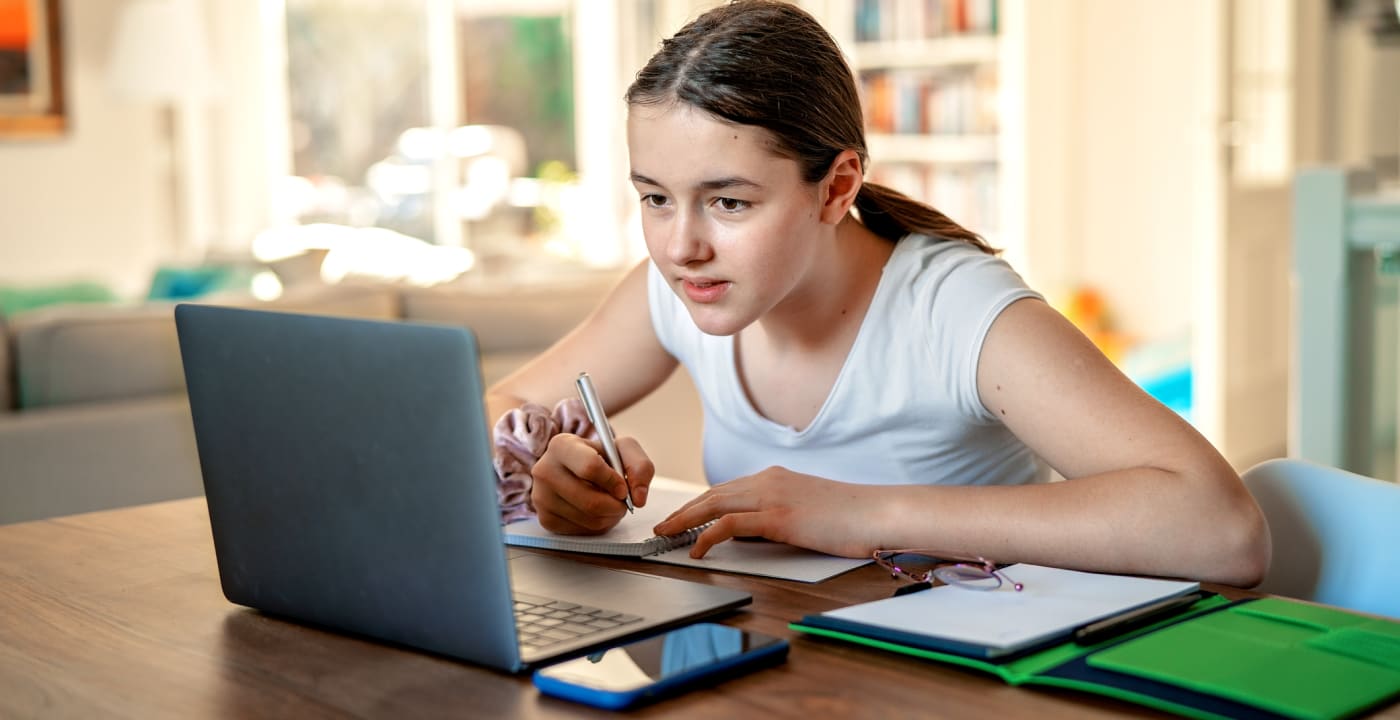Online School and Children’s Mental Health: Navigating All That Screen Time

Online school is a significant departure from normal for most children and adults. Some adults wonder what effects online learning, and the increase in social isolation, has on the mental health of children.
Navigating screen time while building healthy behavioral habits
There is no getting around the increased screen time in your child’s life during virtual learning. But, there are ways to balance digital stimuli with other healthy experiences and habits. These can be fun for you too.
Stimuli and stress
Some children have an easier time with online learning than others. But, all are struggling with the longer time periods spent sitting in front of digital devices. This is not a natural learning style and brings its own challenges. Children and teens who are struggling may describe these experiences as challenging, boring, confusing and frustrating. Some may complain of headaches or tired eyes.
If your child is not a visual learner or is young for independent, sustained virtual learning, consider these strategies:
- Talk with your child’s teacher. Classroom teachers are your ally. They too are struggling with the new demands of a virtual world and are working overtime to find creative ways to engage your children. They are interested in your feedback so they can adapt teaching styles to meet your child’s needs. Discuss and define what behaviors during learning might help your child. Keep your child’s teacher informed about what you are observing and what your child is reporting about virtual learning sessions.
- Manage competing sensory input and activity needs. Consider adjusting monitors and volume, limiting outside noise with use of headsets, and uninterrupted spaces at home. If needed, consider periods of just listening to school.
For children who crave movement and are struggling to sit for extended periods, starting the day with exercise and activity prior to sustained seating is helpful. Some children crave movement to alert their brains and bring their attention system online. Consider providing a hands-on fidget ball, or other simple tactile toy during virtual sessions. Allow your child to stand, face alternate directions, and walk about and stretch while listening to break up the time. If available and helpful, consider allowing a child who craves activity to sit on an exercise ball and gently bounce while participating in learning.
- Play, play, play. With all that intense online focus, children can become overstimulated, stressed and anxious. Help your child blow off steam with exercise and movement. Recess and breaks should involve an opportunity to stretch muscles and get fresh air outdoors. When inside, engage your child’s ideas regarding activities to get him or her moving. Building forts, creating obstacle courses, and engaging in movement games such as Simon Says, Follow the Leader, Duck Duck Goose, and other favorites can work out energy and lighten spirits. Physical challenges like sit-ups and push-ups, also engage bodies and burn off energy in healthy ways.
- Calming and relaxing experiences help too. Pick one time during the day for reduced stimuli. If anxiety runs high before school starts, try a simple art project, favorite book or quiet cuddle before class. Remind children that perfection is not expected and that participation is what counts. Praise your child for their willingness to persevere during this difficult time and fill him/her with positive and hopeful messages for the day. At the end of the school day, again praise your child for his/her attendance and participation. Then, allow your child some down time. Sustained learning is mentally fatiguing, and you may see signs that your child wants to turn-off. In small doses this is healthy and rejuvenating and should be allowed. At the end of the day or over a snack or dinner, sit down together and talk about the day or go for a relaxing walk. It’s also okay to let your child watch an age-appropriate television program if it helps your child relax. The key to after-school unwinding is a reduction in pressure and the opportunity for your child to choose what feels best.
Attending to teens
While many teens can adapt to autonomous work more easily than younger children, virtual learning is still a new experience for most of them.
- Check in with your teens. Digital socializing may be familiar to them, virtual learning is not. Help your teen create a realistic schedule for getting work done in defined periods, building in breaks and times for socializing, exercising and entertainment. Encourage your teen to do some work first and use enjoyable and relaxing activities as a reward.
- Encourage healthy habits. Teenagers do better if they get adequate sleep, eat healthy meals and exercise regularly. Keeping a consistent sleep routine, with predictable times to wake up and go to bed, help regulate mood and their ability to fulfill academic expectations.
The team at the MultiCare Behavioral Health Network, including pediatric and family-focused behavioral health professionals from Mary Bridge, Greater Lakes Mental Healthcare, and Navos, is on a mission. They want families to have the behavioral health tools they need to navigate the emotional aspects of online school and pandemic life.




